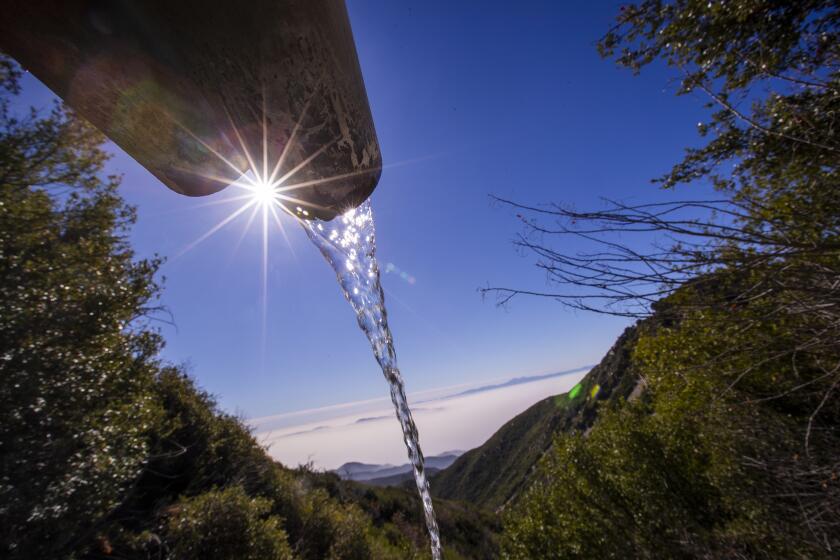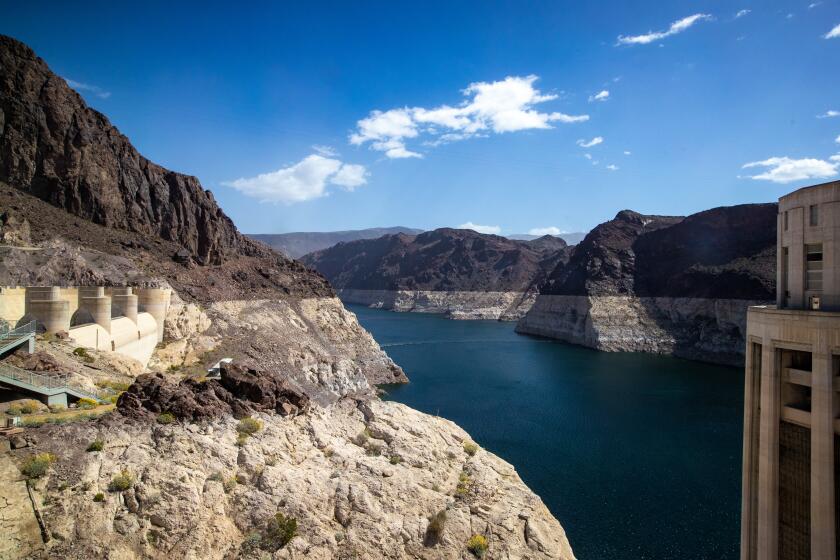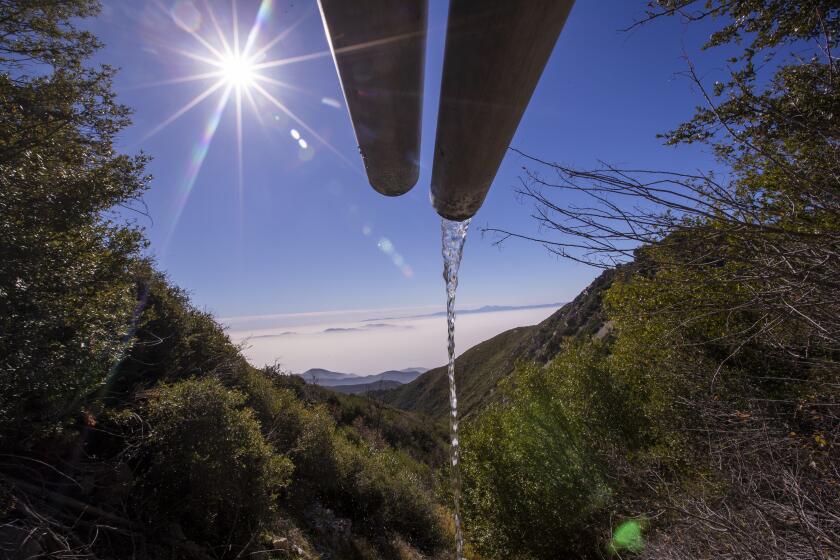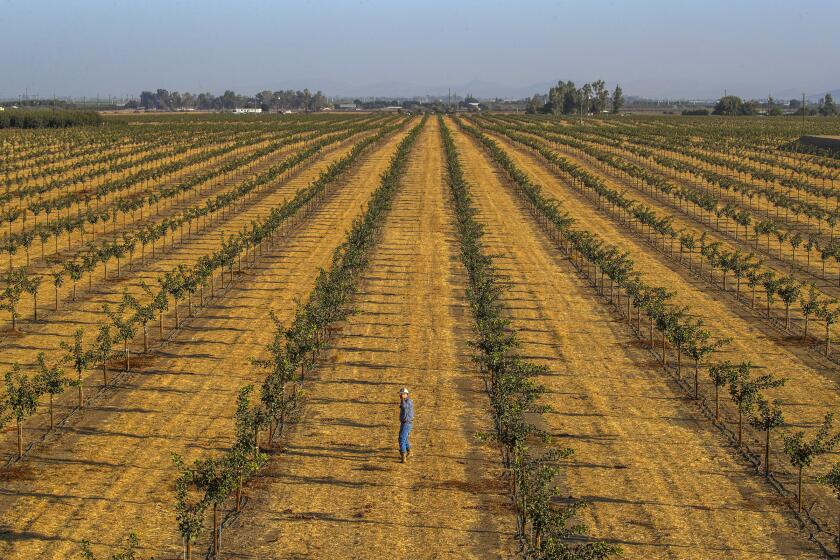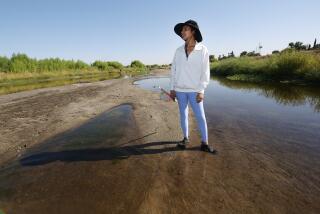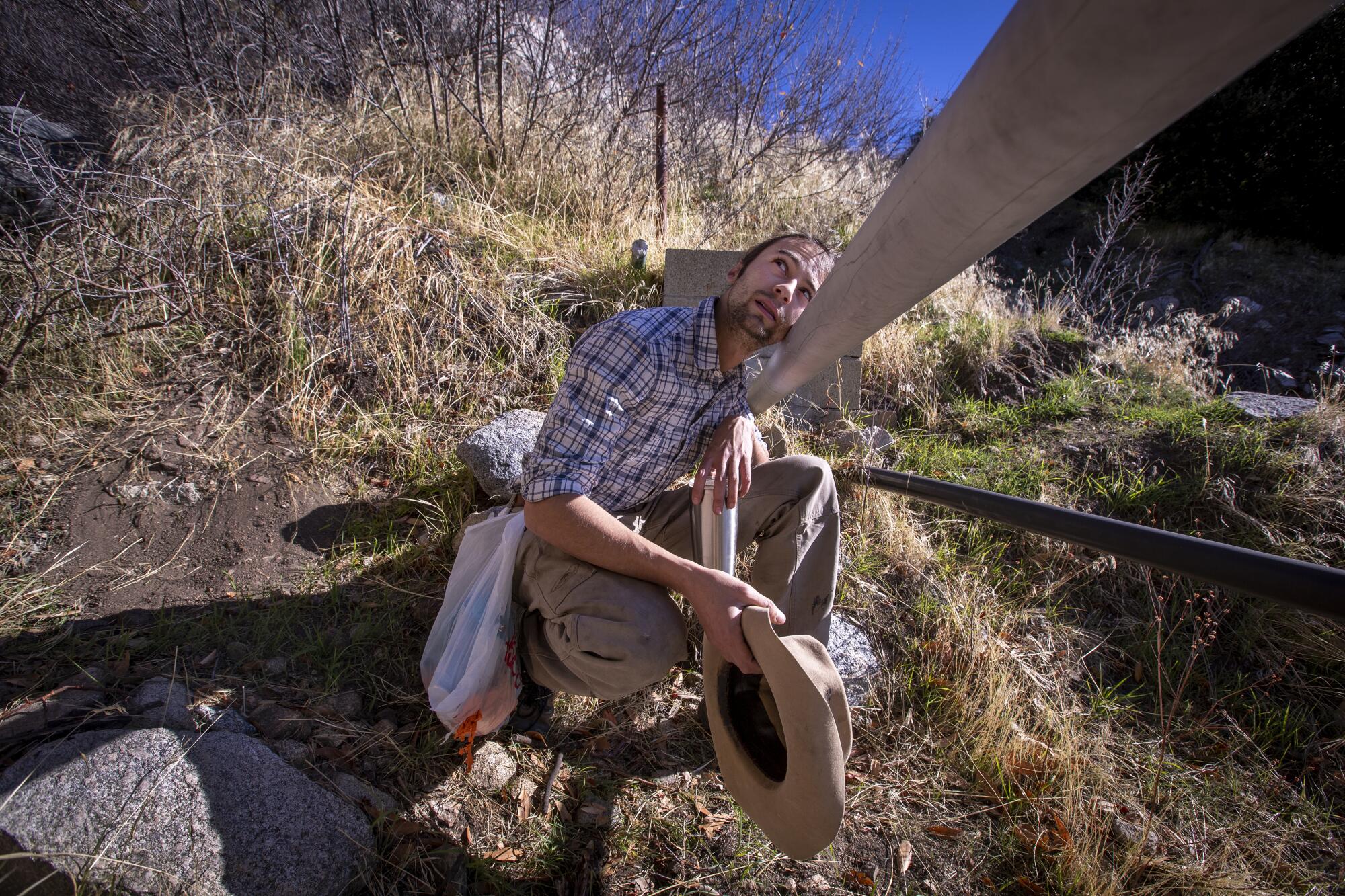
The company that sells Arrowhead 100% Mountain Spring Water is suing to challenge California regulators’ recent ruling that the company must stop taking much of the water it pipes from the San Bernardino National Forest for bottling.
BlueTriton Brands filed the lawsuit this month in Fresno County Superior Court, arguing in its complaint that the State Water Resources Control Board overstepped its authority “far beyond what California law allows.”
Aggressive and impactful reporting on climate change, the environment, health and science.
The board voted unanimously in September to order the company to halt its “unauthorized diversions” of water from springs in the San Bernardino Mountains.
Board members adopted the order after the agency’s staff determined the company has been unlawfully diverting water without valid water rights. They told BlueTriton to stop taking water for bottling from most of its water collection tunnels and boreholes.
Lawyers for the company argued during a hearing last month that the process was rife with problems and that they are entitled to the water.
A company is siphoning water from a national forest to sell as bottled water. California water regulators want to limit the operation.
The state’s order is a “radical departure from over a century of [water board] administrative practice and legal precedent,” BlueTriton said in an email.
The board’s order “ignores dozens of agency staff reports and analyses which uniformly conclude that the [water board] does not have permitting authority over groundwater unless it is flowing in a ‘subterranean stream,’” the company said.
The board issued its ruling after an investigation and deliberations that lasted several years. State officials said in documents filed during the process that diversions of water from springs that supply streams are subject to the board’s authority.
The agency declined to comment on specifics of the litigation.
“The board conducted a full and fair proceeding prior to the issuance of the cease-and-desist order and will defend its decision in court,” it said in an email.
According to the agency, the company draws water from eight springs “where flow historically reached the surface.” The order to halt diversions applies to 10 boreholes and tunnels, and doesn’t affect three other boreholes that capture water.
States that rely on the Colorado River agreed on a proposal for cutting water use. Officials say an analysis shows the approach addresses short-term risks.
Environmentalists have campaigned for years against bottling water from the national forest, saying the company’s network of pipelines removes precious water that would otherwise flow in Strawberry Creek and nourish the ecosystem.
The system of 4-inch steel pipes collects water that flows with gravity from various sites on the steep mountainside above the creek. The pipeline runs to a roadside tank, and the water is trucked to a bottling plant.
Controversy over the use of water from the national forest erupted after a 2015 investigation by the Desert Sun revealed that the U.S. Forest Service was allowing Nestle to continue siphoning water using a permit that listed 1988 as the expiration date.
The Forest Service subsequently began a review of Nestle’s permit and in 2018 granted a new permit for up to five years. The revelations about Nestle piping water out of the national forest sparked an outpouring of opposition and prompted several complaints to California regulators questioning the company’s water rights claims, which led to the state’s investigation.
BlueTriton Brands took over the bottled water business in 2021 when Nestle’s North American bottled water division was purchased by private equity firm One Rock Capital Partners and investment firm Metropoulos & Co.
The springs are the namesake source of Arrowhead brand bottled water, which is named after an arrowhead-shaped natural rock formation on a nearby mountainside.
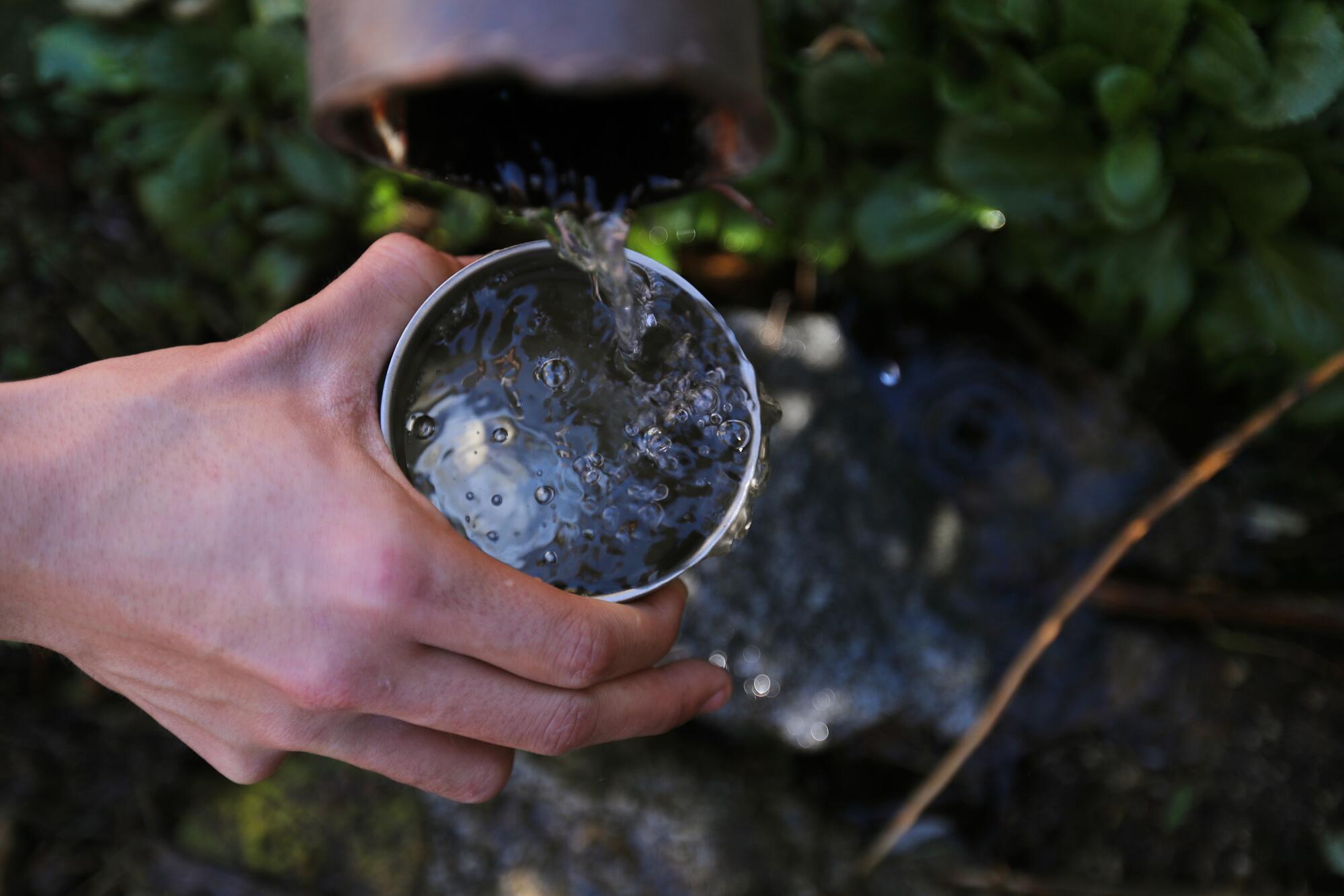
State officials say the first facilities to divert water in the Strawberry Creek watershed were built in 1929, and the system expanded over the years as additional boreholes were drilled into the mountainside.
Records show about 143 acre-feet, or 46.5 million gallons, flowed through the company’s network of pipes in 2021.
BlueTriton and prior owners of the business have for years had a federal special-use permit allowing them to use the pipeline and other water infrastructure in the San Bernardino National Forest, paying an annual fee that as of last year was $1,950. There has been no fee for using the water.
California regulators have ordered the company that sells Arrowhead bottled water to stop taking much of the water it pipes from a national forest.
The Forest Service has recently told the company, however, that reissuing the permit would require proof of water rights.
The water board ordered BlueTriton to comply with the order by Nov. 1. State officials said the order in effect restricts 80% of the company’s diversions from the watershed.
BlueTriton said on its website that the board’s ruling “creates water rights uncertainty and negatively impacts every water agency and farmer in California that relies on groundwater, and in doing so, indirectly harms every Californian.”
The company said it will “vigorously defend our water rights through the available legal process,” while it also intends to “comply with the order unless otherwise authorized by the courts.”
The company said in its complaint that the water board lacked jurisdiction to issue the order and violated California’s Administrative Procedure Act and other laws. It said there were numerous “procedural irregularities that resulted in the denial of a fair hearing” for the company.
The company’s argument centers on the different legal treatment of groundwater and surface water under California law. The law says the water board has permitting authority over surface water and “subterranean streams flowing through known and definite channels.”
BlueTriton said the state’s order represents a departure from legal limitations on the agency’s authority and “creates a vague new standard” that renders any groundwater the board deems to be linked to the ground surface as subject to its authority.
The company made the same argument to the water board. But state officials disagreed.
In a motion filed in 2021, Kenneth Petruzzelli, an attorney for the board’s prosecution team, wrote that “a spring supplying a stream is part of the stream.”
“Diversions from the spring, even diversions using tunnels and boreholes, are still diversions from the stream,” Petruzzelli wrote.
California groundwater levels have risen in many areas this year, but after years of over-pumping, aquifer levels largely remain lower than two decades ago.
The agency’s staff also cited historical records describing the springs and the creek nearly a century ago, including field notes and reports from W.P. Rowe, an engineer who surveyed the watershed in 1930 and ’31. In one letter, Rowe wrote that Strawberry Creek “has its source at a group of springs,” that the flow “should be fairly regular,” and that he saw water flowing in a “rock gully lined with alder, sycamore, dogwood and cedar trees together with ferns and thimble berry bushes.”
Rachel Doughty, a lawyer for the environmental nonprofit Story of Stuff Project, said the bottling operation has drained Strawberry Creek and dried up habitat that plants and animals once depended on.
“We always figured they’d sue to try to keep their straw in there,” Doughty said. “The water is valuable. So they’re going to try to keep doing it.”
The San Bernardino National Forest is one of various locations across the country where BlueTriton obtains water. The company has said Arrowhead bottled water is sourced from 11 spring sites across California, as well as one spring in Colorado and one in British Columbia.
BlueTriton, based in Stamford, Conn., also sells various other bottled water brands, including Poland Spring, Zephyrhills and Pure Life.
Amanda Frye, an activist who lives in Redlands and filed one of the complaints that prompted the state’s investigation, said she thinks the company is making a desperate attempt to continue taking water from the forest and is “grasping at straws.”
“They don’t have any valid water rights in the San Bernardino National Forest, and they never have,” Frye said.
In the rugged canyon downhill from the springs, Strawberry Creek has continued flowing. But when Frye has hiked along the creek, she has found that its western fork, located downhill from the company’s water pipes, is just a trickle, with a series of puddles in a thicket of bushes and trees.
“They’re blocking the springs,” Frye said. “So the water that should be going into the creek is going into their pipe.”

